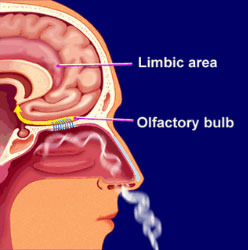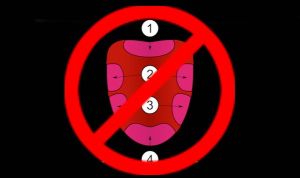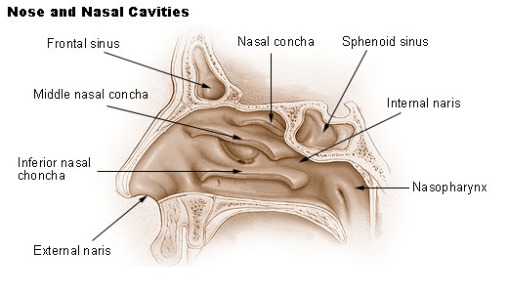(source 37)
Such a Sweeeet Sensation
The five taste sensations are sweet, sour, salty, bitter, and umami (the flavor of glutamates). Though it is true that tongue receptors can identify five basic sensations, they are not divided into sections on the tongue; it can taste all five anywhere on it nearly equally. For example, you do not only taste salt when it is placed on one are of your tongue. You can discern any flavor at any point where taste receptors exist (34, 35).
(source 36)
Just Gustation
Gustation, or tasting, is the process by which chemical signals are changed into neural impulses via the tongue. Chemicals in food activate a certain type of sensory receptor known as a gustatory receptor. About 50 of these cells make up a single taste bud. Chemical molecules are mixed with saliva, then they enter the receptor cell through an opening called a taste pore. It then reaches the gustatory hairs which turn the chemical messages into neural impulses. The brain receives these impulses and perceives taste (33) .
We’re All in This Together
The senses don’t always operate independently. Sensory interaction is the relationship between senses and how they affect each other. For example, taste and smell often coincide. Smell helps define the flavor of a food, which explains why when you are congested food seems more tasteless (32).
Who Knows About the Nose?
Olfaction, or smelling, is the process by which chemicals signals are translated into neural impulses via the nose. Chemicals in the air enter the nose through the nostril. They then dissolve in mucus located within a structure called the olfactory epithelium. The chemicals then trigger specific cilia located within the olfactory epithelium, though know one knows why certain cilia are affected by specific chemicals. The cilia generate electrical responses which are then passed to the olfactory bulb. The olfactory bulb transmits signals to the brain via the olfactory tract (30).
Shedding Light on the Bulb
Definition:
Olfactory bulb- The part of the olfactory system that connects the naval cavity with the olfactory tract and the brain. It contains the olfactory nerve which transmits sensory signals to the brain to be processed (27).

(source 29)
A Sniff Down Memory Lane
Have you ever smelled something that reminded you of your grandmother’s house, or felt nostalgic when you inhale the scent of an old book? This is because of smell’s close relationship with memory. Why is this? The olfactory bulb, which processes smells, is a part of the limbic system which plays a large role in emotions and memory. These brain structures (specifically the amygdala, hippocampus, and olfactory bulb) often work together to create the emotionally-rooted memories that are often attributed to smell (28).
Under Pressure
The skin has four main senses: pressure, warmth, cold, and pain. Only pressure has identifiable receptors in the skin. The others’ relationship to skin receptors is unknown. Some sensations are caused by stimulating multiple types of nerve receptors. For example, a wet feeling can be created by stimulating nearby cold and pressure receptors (27).
Pain, Pain, Go Away
Pain is not caused by any specific type of stimulus nor is there special receptor cells located within the body dedicated to it. Though pain largely exists in the brain, it is your body’s way of communicated that something is wrong. This allows us to recognize when we are sick or injured so we can attend to our ailments. Many circumstances can influence how we perceive pain, such as distractions, society (such as in cases of epidemic-related mass hysteria), memory, and mental state (26, 27).
The gate control theory states that within the spinal cord is a neural gate-type structure that either impedes or allows pain signals to continue to the brain. The gate is opened by the pain impulse’s activity in surrounding fibers, and closed either by more influential fibers or a signal from the brain . This theory supports that chronic pain can be treated by stimulation of these large nerve fibers, such as through massage, which will then close the gate (27).


